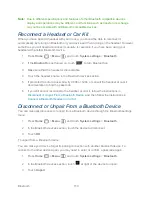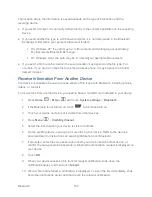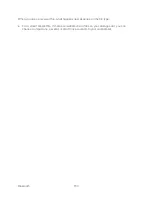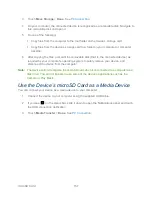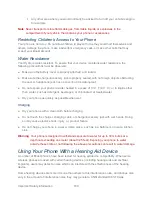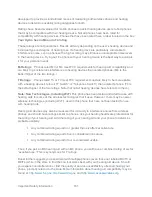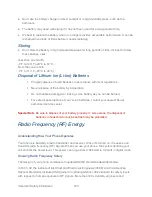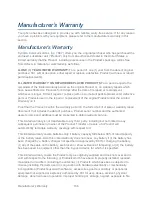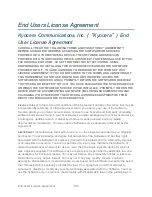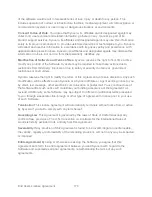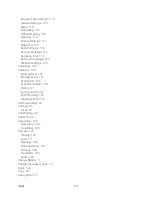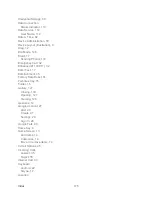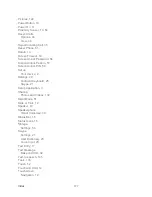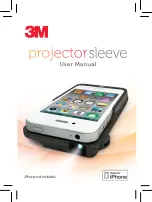
Important Safety Information
164
physicians from universities, government health agencies and industries developed this updated
standard after reviewing the available body of research. In 1993, the Federal Communications
Commission (FCC) adopted this updated standard in a regulation. In August 1996, the FCC
adopted hybrid standard consisting of the existing ANSI/IEEE standard and the guidelines
published by the National Council of Radiation Protection and Measurements (NCRP).
Body-Worn Operation
To maintain compliance with FCC RF exposure guidelines, if you wear a handset on your body,
use the Boost-supplied or Boost-approved carrying case, holster or other body-worn accessory.
If you do not use a body-worn accessory, ensure the antenna
s are
at least
0.590 inches (1.5
centimeters)
from your body when transmitting. Use of non-Boost-approved accessories may
violate FCC RF exposure guidelines.
Other accessories used with this phone for body-worn operations must not contain any metallic
components and must provide at least
0.590 inches (1.5 centimeters)
separation distance
between the
antennas and the user‟s body.
For more information about RF exposure, visit the FCC website at
http://www.fcc.gov
.
Specific Absorption Rates (SAR) for Wireless Phones
The SAR is a value that corresponds to the relative amount of RF energy absorbed in the head
of a user of a wireless handset.
The SAR value of a phone is the result of an extensive testing, measuring and calculation
process. It does not represent how much RF the phone emits. All phone models are tested at
their highest value in strict laboratory settings. But when in operation, the SAR of a phone can
be substantially less than the level reported to the FCC. This is because of a variety of factors
including its proximity to a base station antenna, phone design and other factors. What is
important to remember is that each phone meets strict federal guidelines. Variations in SARs do
not represent a variation in safety.
All phones must meet the federal standard, which incorporates a substantial margin of safety.
As stated above, variations in SAR values between different model phones do not mean
variations in safety. SAR values at or below the federal standard of 1.6 W/kg are considered
safe for use by the public.
The highest reported SAR values of the Hydro are:
PCS mode (Part 24):
Head:
1.14
W/kg; Body-worn:
0.58
W/kg
FCC Radio Frequency Emission
This phone meets the FCC Radio Frequency Emission Guidelines.
FCC ID number:
V65C5170
.

